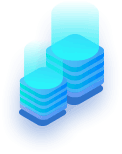Cloud computing and edge computing are concepts at two levels, and the application fields are actually different.
Edge computing refers to the use of an open platform near the data source to directly provide the most end-to-end services nearby.
Cloud computing, on the other hand, refers to decomposing numerous data computing processing programs through the network, and reprocessing and analyzing these decomposed small programs through a system composed of servers to obtain results.
The application of edge computing energy efficiency is initiated at the edge of the data source, which reduces the process of data transfer on the network, and the resulting network services will be faster. In some industries, real-time business, application intelligence, security and privacy protection Other applications are very good.
Cloud computing integrates computer technologies such as distributed computing, utility computing, load balancing, parallel computing, network storage, hot backup redundancy, and virtualization. It has virtualization technology, dynamic scalability, on-demand deployment, high flexibility, and reliability. The advantages of high cost performance and scalability.
Some people may still be a little confused when they see this, and still don't know the difference between cloud and edge computing. In fact, it will be easier to understand with an example. For example, when using a program, a user will synchronously collect his geographic location, search history, dwell time on different pages, etc., in order to filter out what he is more interested in, and then deliver content and advertisements to the user more accurately.
If cloud computing is used to complete this operation, after the program collects information, it will upload all the information to the server first, and then the cloud server will complete the algorithm to identify the user's hobbies, consumption tendencies, etc. Based on the calculated results, content and advertisements are further delivered to users.
If edge computing is used to complete this operation, the program will directly calculate and identify the user's hobbies and interests after collecting the information. The server only needs to specify which users it wants to deliver content and advertisements to, and the program can directly complete the delivery. During the process, the server does not participate in the collection of information and calculations, and the server only knows the final result, not the data in the process.





